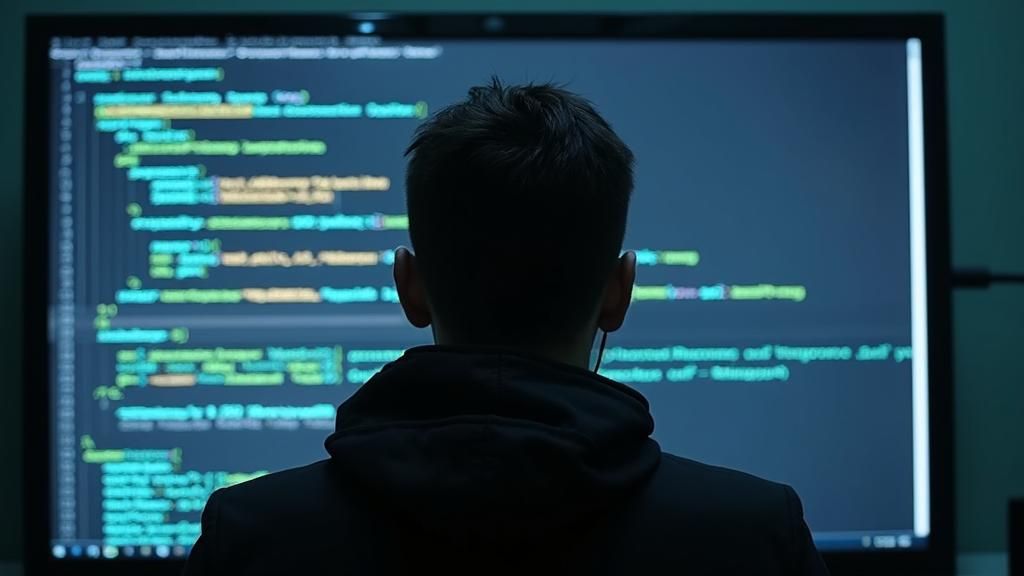The SOAS University of London data breach has surfaced on a dark web marketplace, where an attacker is offering data allegedly stolen from fifteen different subdomains belonging to the university. The listing, marked as a “first-time leak,” is being sold for $5,000 in Monero (XMR), a privacy-focused cryptocurrency known for its untraceable transactions. The seller claims the database contains sensitive internal information from one of the United Kingdom’s most internationally significant universities.
Background of the SOAS University Breach
SOAS University of London is one of the UK’s leading public universities, recognized globally for its research and education focused on Asia, Africa, and the Middle East. The dark web post advertising the breach includes screenshots of internal directories and server information, suggesting that multiple systems were compromised. According to the seller, the breach involves 15 interconnected subdomains of the university, indicating a broad and coordinated intrusion rather than a single misconfigured system.
- Source: SOAS University of London (soas.ac.uk)
- Scope: Data from 15 subdomains, indicating systemic compromise
- Proof: Screenshots shared by the seller as evidence
- Price: $5,000 (Monero)
- Intent: Likely espionage or data resale for credential exploitation
The number of affected subdomains suggests that the attacker gained privileged access, possibly through a cloud service, identity management system, or shared content management platform. The breach is being taken seriously by cybersecurity researchers because it may expose sensitive personal data belonging to students, faculty, and staff.
Key Cybersecurity Insights
This is a critical-severity incident that combines regulatory, reputational, and potential national security risks. A compromise affecting so many subdomains within a major UK university implies long-term, unauthorized access and potential data exfiltration over an extended period.
Systemic Compromise of University Infrastructure
The scope of the SOAS University of London data breach implies a systemic failure across interconnected systems. The attack most likely exploited a shared hosting environment or an administrator account that provided access to multiple web applications at once. Possible entry points include:
- A compromised master cloud hosting account (e.g., AWS or Azure)
- A zero-day exploit within a content management system (CMS) or identity provider (IdP)
- Stolen or reused administrative credentials from a developer or IT staff member
This kind of multi-domain breach is highly coordinated and unlikely to have been carried out by an amateur. It points to a sophisticated actor with persistence and resources, possibly operating under state sponsorship.
UK GDPR and ICO Regulatory Implications
As a public university, SOAS is a “Data Controller” under the UK General Data Protection Regulation (UK GDPR). Any incident involving the unauthorized disclosure of personal data must be reported to the Information Commissioner’s Office (ICO) within 72 hours. Failure to comply can result in severe financial penalties of up to £17.5 million or 4% of global turnover, whichever is higher.
If the exposed data includes personal information belonging to students or staff, SOAS must also notify those affected directly. These notifications must explain what data was compromised and provide guidance on how individuals can protect their accounts and personal information.
High Risk of Credential Stuffing and Phishing
The stolen database likely contains usernames, emails, and hashed passwords from university login systems. Attackers often crack these passwords and use them in credential stuffing campaigns, testing combinations on other popular sites like Gmail, Outlook, or online banking platforms. Academic institutions are prime targets because students and staff frequently reuse the same password across multiple services.
Phishing is another major concern. The attacker can use real names, academic roles, or course details to send convincing emails that trick recipients into revealing new passwords or financial data. A message could appear to come from “SOAS IT Services” or “Student Finance” and include an official-looking link that leads to a phishing site.
Espionage and National Security Concerns
Beyond financial motives, there are strong geopolitical implications. SOAS University of London is a hub for international studies and diplomacy, and many of its students and faculty are involved in research and policy work related to foreign governments. A complete list of names, emails, and affiliations from SOAS would be extremely valuable for intelligence operations, foreign recruitment, or long-term monitoring efforts.
Given the nature of the data and the institution’s global focus, experts believe this may not be a purely criminal case but rather a state-backed intrusion disguised as a commercial data sale. The fact that payment is requested in Monero further suggests the attacker is seeking anonymity typically favored by advanced threat groups.
Mitigation Strategies and Response Actions
For SOAS University of London
- Immediate Incident Response: Engage a specialized Digital Forensics and Incident Response (DFIR) firm to identify how the attacker gained access and whether the network remains compromised.
- Report to the ICO: Notify the Information Commissioner’s Office within the 72-hour legal window as required by UK GDPR.
- Force Password Reset: Require all students, faculty, alumni, and administrative staff to reset their passwords immediately across all connected systems.
- Enforce MFA: Mandate Multi-Factor Authentication (MFA) for all accounts to prevent further unauthorized access, even if passwords are compromised.
- Notify Affected Users: Contact all students and staff to inform them of the breach and warn of credential reuse, phishing attempts, and other risks.
- Collaborate with Law Enforcement: Work with the National Cyber Security Centre (NCSC) and UK law enforcement agencies to investigate potential state involvement or cross-border data trading.
For Students, Faculty, and Staff
- Change Reused Passwords Immediately: If your SOAS password was used on other sites, update those accounts now to prevent credential stuffing.
- Enable MFA Everywhere: Add two-factor authentication to personal and academic accounts wherever possible.
- Stay Alert for Phishing Attempts: Treat any email claiming to be from SOAS or related departments as suspicious until verified. Check the sender address and avoid clicking on links.
- Monitor Personal Accounts: Watch for suspicious login attempts or unexpected password reset requests on your email or banking platforms.
For UK Higher Education Institutions
This incident underscores the growing cybersecurity challenges within the education sector. Universities handle large amounts of sensitive data, including research, student records, and funding information, which make them valuable targets for both criminal hackers and foreign intelligence services. Institutions must prioritize network segmentation, vulnerability management, and mandatory staff training on phishing and data handling.
Industry Impact and Lessons Learned
The SOAS University of London data breach demonstrates how an academic institution can become an entry point for both cybercrime and espionage. The compromise of 15 subdomains suggests that the attacker may have had administrative-level control for months, harvesting data and mapping the network before making the sale public. This level of intrusion has potential long-term implications for the UK’s academic and diplomatic communities.
Universities across Europe and North America should view this as a warning to implement proactive monitoring, secure coding practices, and centralized incident response frameworks to prevent similar multi-domain compromises.
For more updates on data breaches, cybersecurity threats, and national security–related incidents, visit Botcrawl for verified news and analysis.




Leave a Comment